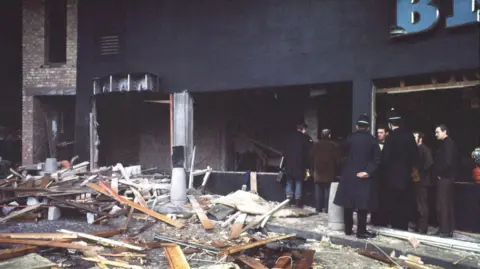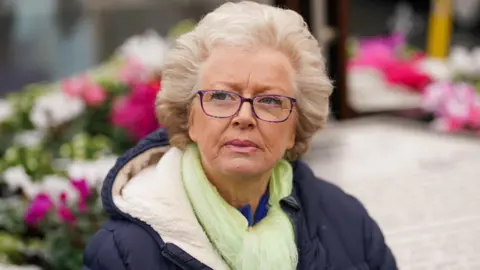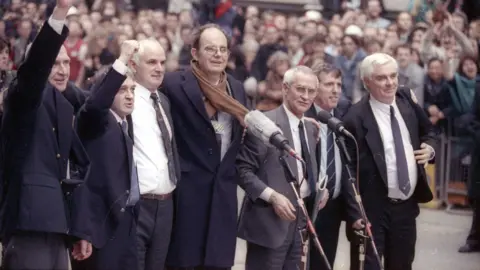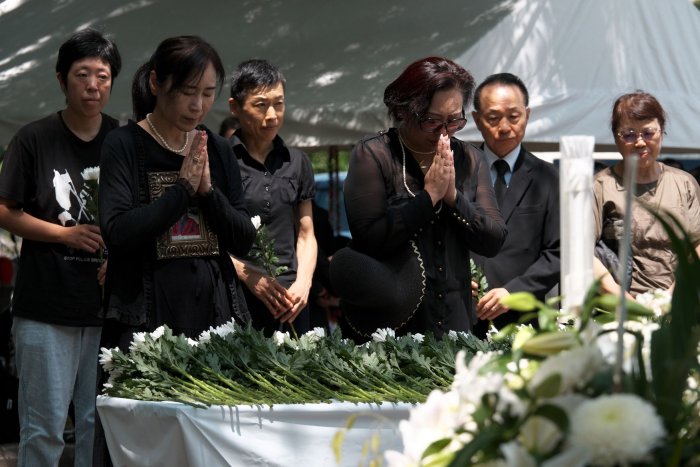No inquiry into 1974 IRA Birmingham pub bombings
 BBC
BBCThe government has announced it will not establish a public inquiry into the IRA’s 1974 Birmingham pub bombings.
Twenty-one people died and 220 were injured by bombs at the Mulberry Bush and Tavern pubs which remain unsolved.
In a statement on Thursday, security minister Dan Jarvis said while he had deep sympathy with the families, “after careful consideration” the government would not commit to an inquiry.
Julie Hambleton, whose sister, Maxine, died in the bombing responded: “As long as there is breath in my body I will fight for justice.”
The ICRIR is a body established to look into deaths during Northern Ireland’s decades-long conflict.
It was set up under the Northern Ireland Troubles (Legacy and Reconciliation) Act and replaced separate inquests and civil actions related to the so-called Troubles.
Speaking to the BBC on Thursday, Ms Hambleton described the current commission as “tantamount to the government literally marking their own homework.
“There is no true independence at all as far as the commission is concerned.
“We have blood that still runs through our city pavements because no answers are being given.”
Ms Hambleton set up the Justice for the 21 campaign group to call for a public inquiry and said it was “quite right” that tragedies like Grenfell and the Manchester Arena attacks should be the subject of their own inquiries.
 PA Media
PA MediaOn the night of the attack a telephonist at the Birmingham Mail and Post received a call from a man who said two bombs had been planted in the city centre.
Minutes later the devices exploded.
Later that evening, five Irish men – Paddy Hill, Johnny Walker, Richard McIlkenny, Gerry Hunter and Billy Power – had left Birmingham by train.
They were stopped by police in Heysham, Morecambe, on their way to catch a ferry to Belfast. A sixth man, Hugh Callaghan, who had seen them off from Birmingham, was also detained.
The group known as the Birmingham Six were initially convicted of the attacks, but freed in 1991 after being cleared of involvement.
 Reuters
ReutersWhile the IRA never officially admitted responsibility, it is widely believed to have been behind the attacks.
Investigative journalist and former MP Chris Mullin said he had tracked down the real bombers, but did not reveal the names until 2019 when he identified Mick Murray, James Francis Gavin and Michael Hayes.
He withheld a fourth name, which he has still not disclosed.
An inquest in 2019 ruled the victims were unlawfully killed by the IRA, but did not determine the identities of those responsible.
Jarvis said ICRIR was created exclusively to investigate Troubles-related cases such as the bombings and operated independently from the government.
“The commission has been granted a wide range of powers to access information, including from government departments, the police, and the security and intelligence agencies,” his statement said.
However, Ms Hambleton said she would not engage with the commission.
“What they have provided in the letter [setting out the minister’s decision] contradicts itself, and it does not and will not serve our case,” she added.


